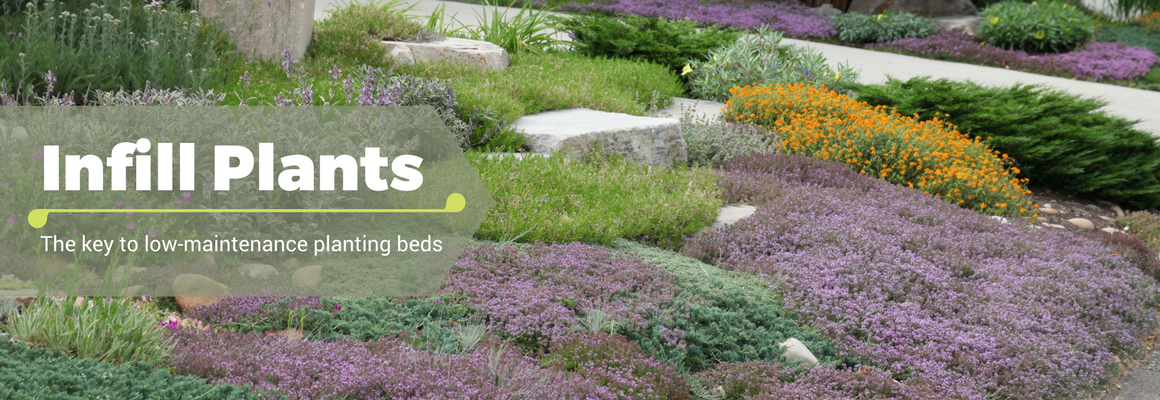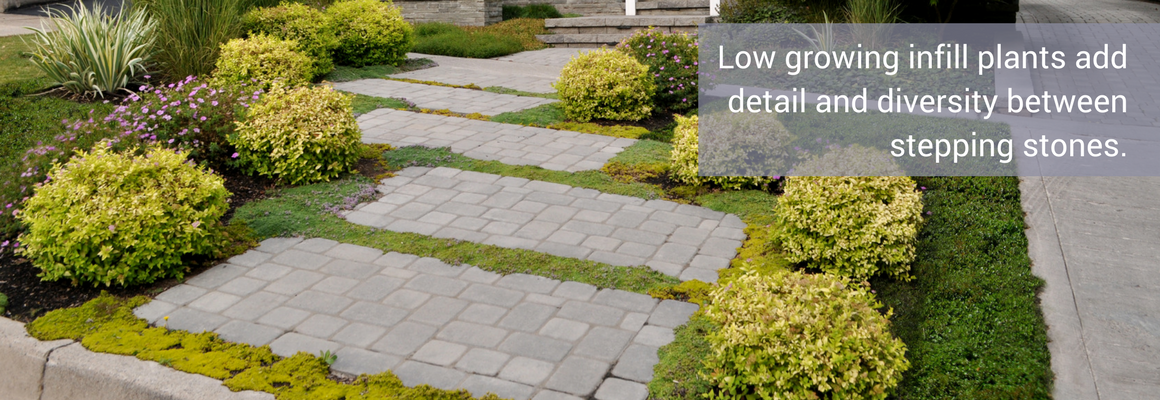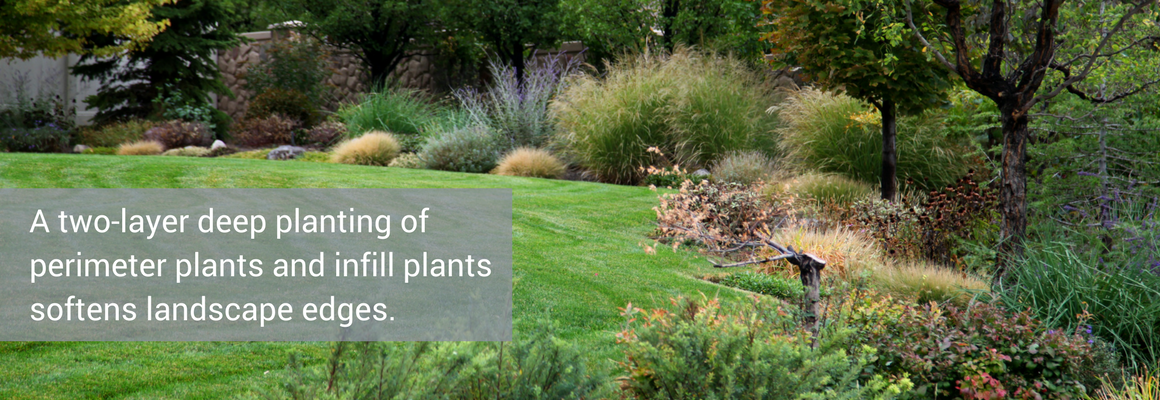
Infill Plants
-
Planting beds contain different areas and groupings of plants that work together to make a yard functional, diverse and attractive. Previous blog posts have discussed trees and perimeter plants, representing the taller plants in a landscape, and foundation plantings which primarily contain plants of moderate height. In this post we will focus on selecting the low-growing, fine-detail plants which fill in planting bed gaps. These are called infill plants and are mostly perennials, but can include ornamental grasses, groundcovers, and on the rare occasion low-growing shrubs. Whatever you choose, infill plants should be no taller than 2-3 feet and usually fall in the 3 inch to 18 inch height range.
-

-
Think of where the edge of your lawn meets your planting beds: is there just mulch there? Infill plants will fill that point of transition, as well as where beds fade to open space. Planting low-growing cover adjacent to paths or billowy perennials at the base of taller shrubs will also add depth and interest to planting beds.
Infill plants also add delightful detail when placed between pavers or stepping stones. There are plant options that can handle light foot traffic for use in these spaces, just make sure to leave a large stepping area so the plantings don’t create a tripping hazard. -
Often, homeowners use infill plants minimally or skip them altogether. Omitting these detail plants results in a thin planting of shrubs sporting “naked ankles” and open soil at the base. An ideal planting bed will contain at least two layers of plants. Taller plants provide the backdrop (your perimeter and foundation plantings), and the infill plants add foliage, texture, contrast, and blooms while also hiding the less-attractive, lower portion of the shrubs behind them.
Beauty is created through contrast, and your planting beds will be more stunning if you use this concept between your perimeter, foundation, and infill plants. The soft movement and light-catching properties of ornamental grasses or the low-growing, uniform green of groundcovers provide a brilliant contrast to the shrubs that provide reliable color all season long. Mixing them with perennials ensures there’s always something new to enjoy. -

-

-
Infill plants also serve a more functional purpose. Though it may seem counter-intuitive, increasing the density of plants in planting beds reduces the maintenance required. The most important way to control weeds in the landscape is to control water, which is accomplished by installing drip irrigation. The next most important factor is to keep soil from seeing the light of day. Accomplish this by using a combination of infill plants and a heavy 3-4 inch layer of mulch to reduce the amount of open ground in the landscape. Nothing encourages weeds like water, sunlight, and no competition.
-


